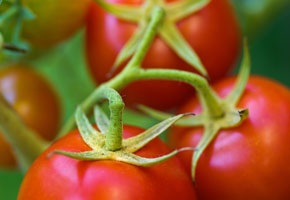
The Saucy History of the Tomato
By Aisleagh Jackson | 0 Comments | Posted 06/09/2014
The seemingly commonplace tomato, the base for many of America’s favorite staples (hello, ketchup), is actually a berry with a vast and splendored history. Native to South America, the tomatl was on the menu as early as 700 AD, and was among the treasures Spanish conquistadors returned home with in the 16th century. Similar to today’s heirloom tomatoes, the colors of these small fruit varied, including shades of red, gold, and green.
From Spain, the tomatl began to travel:
Savvy Spanish Moors recognized the potential and brought seeds back to Morocco, where it was quickly integrated into the cuisine. From here, it is believed that the fruit was brought to Italy, known by a new name: pomi dei mori, meaning apple of the Moors.
In Italy, these pomi dei mori were given yet another name, pomi d’ori, meaning apples of gold, likely due to the varietal being of a golden hue. The herbalist credited with this new name, Pietro Andrae Matthioli, also discovered the plant’s relationship to the nightshade family. A family of potentially fatal and toxic plants, the nightshades were understandably on the no-no list for much of Europe, creating an aura of mystery and danger around these exotic gold apples. Further fueling the fire, Matthioli linked them to the renowned aphrodisiac (or poison) Mandrake, whose Hebrew name dudaim translates into love apples. While it is true that tomatoes belong to the nightshade family, they are the good apple of the bunch-they do not share their siblings’ toxic properties.
For hundreds of years, the majority of Northern Europe shunned these so-called deadly fruit, leaving the Mediterranean region to explore their many possibilities. When they finally found footing in France, they were dubbed pomme d’amour, meaning love apples, which is believed to be either a continuation on the biblical lore or a slip-of-tongue from pom dei mori. Either way, the tomato’s saucy reputation was canonized.
Having found it’s way back to a name much closer to the original tomatl after centuries passing through French, Spanish and Portuguese (tomate) into the English tomato, the legend continued to grow. North America, having heard the tall tales, resisted the temptation of the tomato until the 18th Century, and was highly suspicious even then. It wasn’t until the early 19th century that the U.S. would strike upon the many glories of this fine fruit, which would come to be a cornerstone of the American diet.
For more on the history of the Tomato:
http://www.planetnatural.com/tomato-gardening-guru/history/


 Contact us
Contact us



























